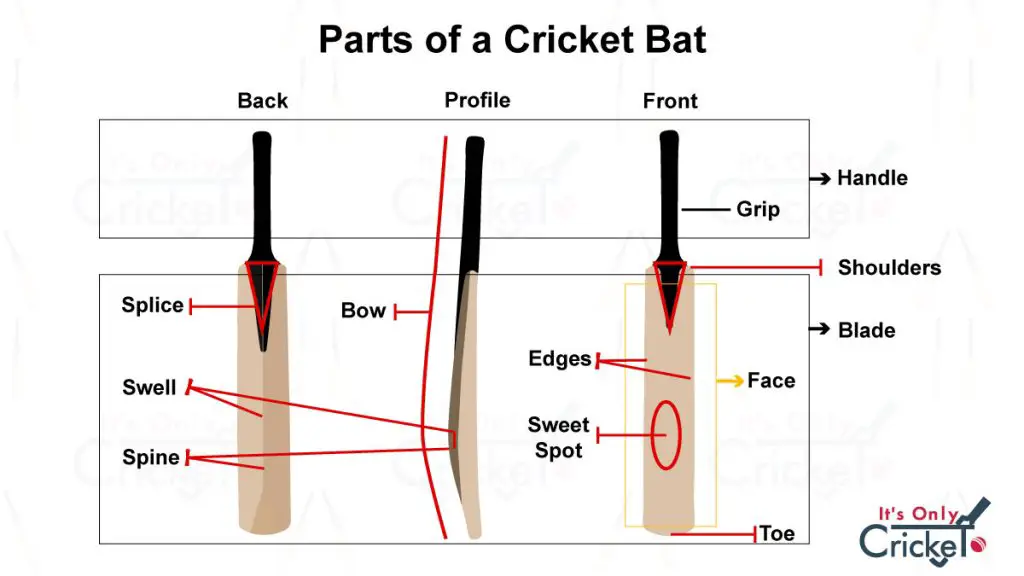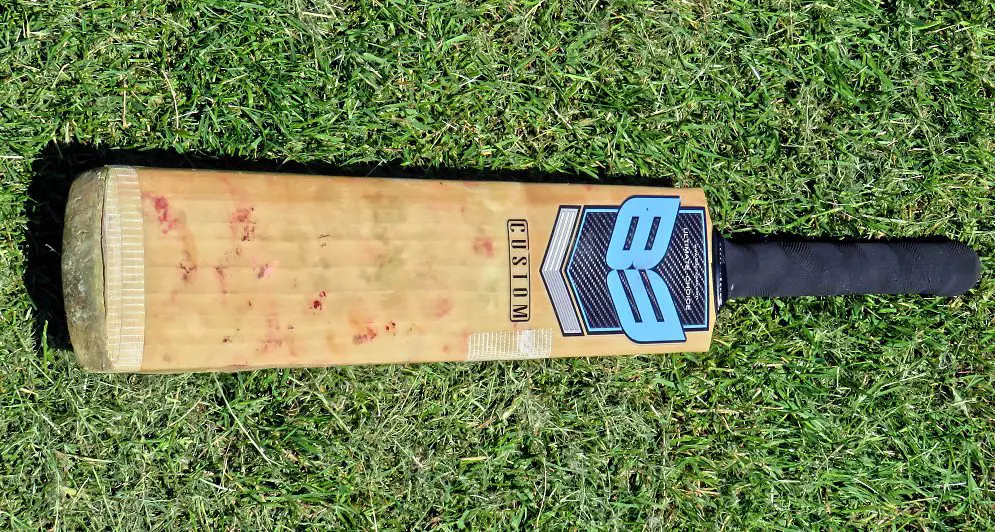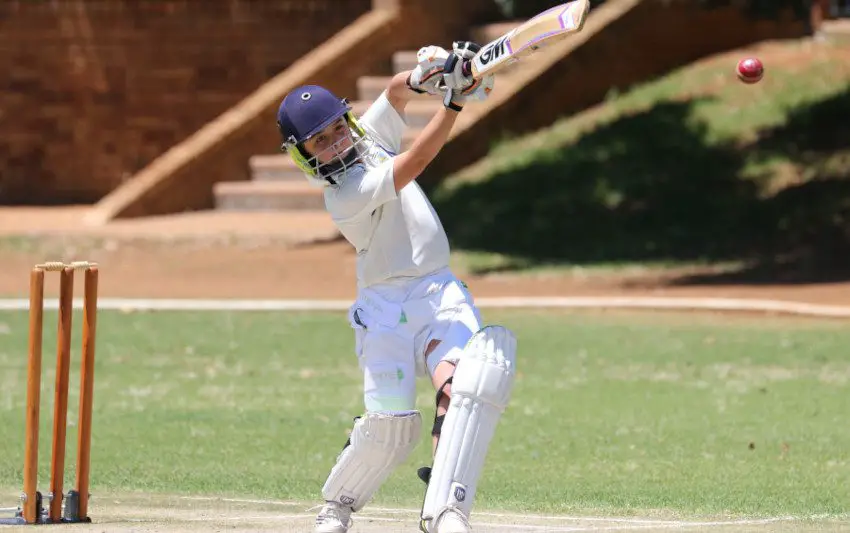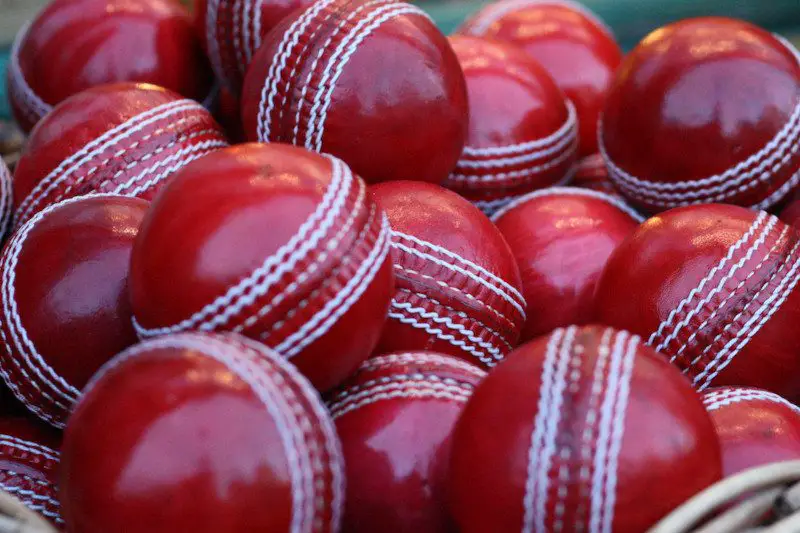Table of Contents
In this guide I’m going to look at the various component parts that make up a cricket bat. Each has their own use in the overall construction and I’ll explain the function of them all as you read through.
At the end of the round up, you’ll understand why each piece is vital and what role it has during a match.
Cricket Bat Parts: Their Place and Function

Bat Handle
The batsman uses the handle to hold the bat so it must be sturdy and strong. It’s a cylindrical piece of wood that slots into the shoulders. Usually, the handle is made from a different piece of wood than the main part of the bat but the same material is used.
Handles can be long or short to suit the individual preferences of the batsman. That preference can relate to height or the style of play of the batter in question.
The Grip
The handle is bare wood and, as such, is difficult to hold firmly in its raw state. For that reason, a rubber grip rolls over the cylindrical handle. The grip comes in all colours but rubber is the most commonly used material and the bat can then be held comfortably and firmly.
Bat Blade
The blade is simply the main section of the bat. It can be divided into separate sections with names for specific parts but the overall area below the handle is referred to as the ‘blade’.
Bat Shoulders
This is the name for the two vertical pieces of wood that appear at the bottom of the bat handle and the top of the blade. The shoulders are horizontal and are located on either side of the handle itself. It’s a common indicator of having a bat that is too short, if you hit the ball on the shoulder.
Bat Splice
The splice is a joint of wood that attaches the handle of the bat to the shoulder. It is an upturned ‘v’ shape and it must fit tightly with glue added for extra strength.
The Bow
The term “bow” refers to the entire back of the bat. When seen in profile, you’ll notice that there is a curve from the bottom of the handle through to the toe. This entire curve is referred to as the ‘bow’.
Bat Edge
I’ve used the edges of a bat more than I would have liked. The edges are the two sides of the bat running down the entire length from the shoulder to the toe. The side closest to the batsman is the inside edge while the side facing away is called the outside edge.
The edge is not deliberately used to hit the ball but it will likely come into contact when the batsman is deceived by swing, seam or spin.

Bat Face
For myself and for every batsman involved in the game, the face is the most important part of a cricket bat. The face is the part of the bat that is at the front between the shoulder and the toe. It is literally ‘facing’ the bowler and is the area that will come into most contact with the ball.
The face can suffer from wear and tear over time and that’s why it’s important to prepare your bat fully for use in match situations.
The Sweet Spot
The sweet spot is positioned within the blade and it’s the area that myself, and all batsmen should be looking out for. When the ball comes into contact with the sweet spot, it should be timed better and travel faster through the outfield.
The positioning of the sweet spot will differ between bats and the exact position is important for gameplay. Those who excel at front foot shots should choose a bat with a lower sweet spot. For back foot shots such as the cut and the pull, a higher sweet spot is more desirable.
If you’re a well balanced player who is comfortable off the front and back foot, you can choose a bat with a sweet spot towards the middle.
Bat Swell and Profiles
The swell is located at the back of the bat. When viewed in profile, you’ll notice that there is more wood towards the bottom of the bat than there is near the shoulders and this is known as the ‘swell’.
The exact positioning of the swell is important and it can influence how a bat performs. This is why it is essential to find the correct size cricket bat. A lower swell helps attacking batsmen who like to play off the front foot. A higher swell offers more assistance to those who are stronger at back foot shots such as the hook or pull. A middle swell provides a good balance between the two profiles.
Bat Spine
The spine is located on the back of the bat and is situated in the middle where the wood rises to a central point. It will run from the handle towards the swell.
Bat Toe
The toe is the very bottom piece of the bat. It can be in contact with the ground for extended periods of time and, for that reason, some bats now come with a rubber toe guard to avoid unnecessary damage.
What is it Made Of?
Cricket bats are traditionally made from willow wood. The fibres and overall strength of this material makes it the most ideal wood and the durability is an important factor too.
There is a debate over which willow is best: English willow is more widely used in the manufacturing process but Kashmir willow is also available. There is split opinion surrounding the two options but, in summary, willow is by far the best material currently available.
Closing Thoughts
While it’s interesting to look at the various components of a cricket bat, I also think it’s important that we understand them and their functions. As batsmen, we need to take care of our equipment so tasks such as oiling and knocking in the cricket bat make more sense when we know what the working parts are.
Hopefully this has explained everything and you can now start to appreciate the work and the functionality of your most important piece of equipment.


